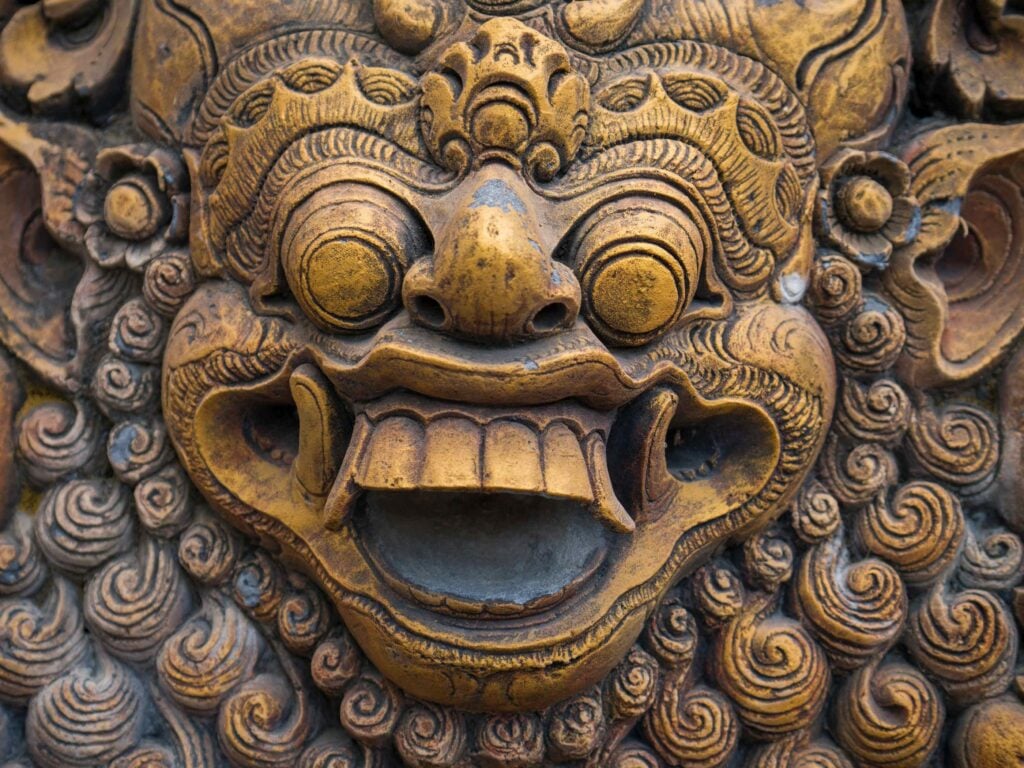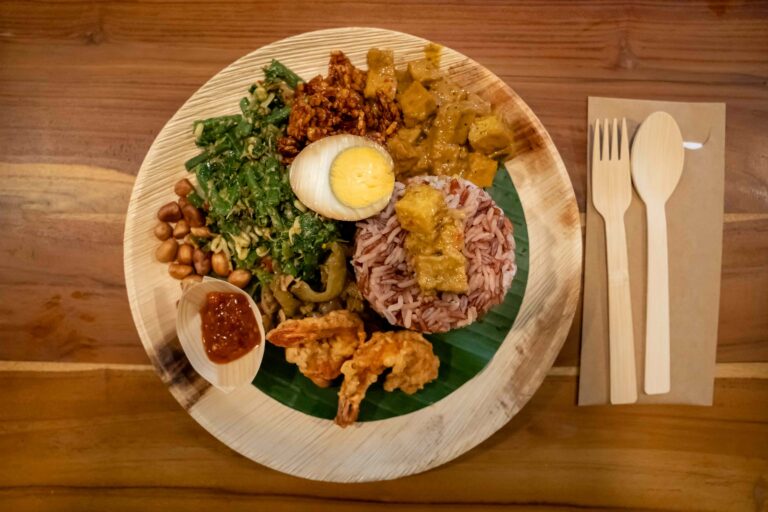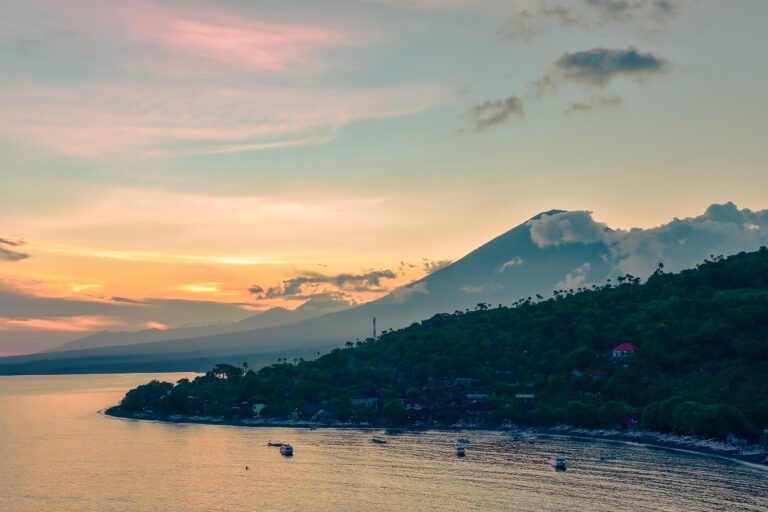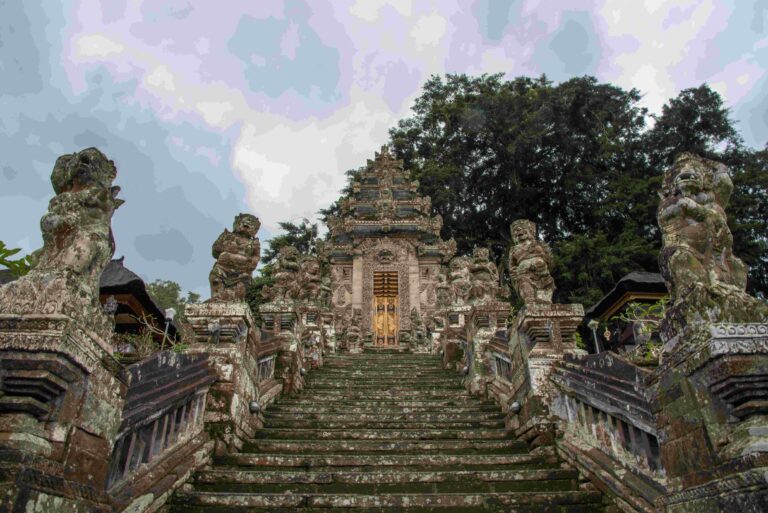Balinese Art is distinct from most Indonesian art because it is a combination of Hindu-Javanese art with a local flavour.
It stems from the artisans of the Majapahit Empire who originally migrated to Bali as part of the empire when it conquered the island in the 14th century but they stayed as the empire collapsed.
Then from the 16th century to the early half of the 20th century, Kamasan in Klungkung became the official centre of Balinese art.
However, this period saw a huge expansion in modern art in Bali and it led to Ubud, in Central Bali, and the nearby villages becoming the new centre of the arts in the 21st century.
Today, Ubud and Batuan are best known for paintings, the village of Mas is famed for its woodcarvings, Batubulan is well-regarded for its stone carvings and the people of Celuk are sought after for their smithing in both gold and silver.
One of the unique qualities of Balinese art is that it’s not made for art’s sake but rather it is used in everyday objects. It’s folk art with tropical touches that has a practical purpose in the day-to-day life of the Balinese people.
An Introduction To Balinese Art: Kamasan & Wayang

Up until around 1920, Balinese paintings tended to be drawn from the Kamasan style (from the village of Kamasan mentioned above) or the Wayang style (drawn from traditional shadow puppet plays).
A Balinese painting in these styles would be two-dimensional coloured drawings made on cloth, paper, bark and occasionally on wood.
They would tell stories from the Hindu-Javanese epics such as the Mahabharata and the Ramayana or occasionally, they would tell stories from Balinese folklore.
If you see a Balinese painting of this type, you can see that the colours are limited to a small range of natural dyes (red from the rocks ejected from volcanoes, black from soot, etc.) and that all the figures are rendered in a very precise manner.
This is because there were rules set down for the creation of a Balinese painting at this time as it would have been destined for placing in a temple.
It also means that Balinese paintings from this period are usually anonymous and most would have been produced by collectives, they weren’t meant to glorify the artists, they were meant to glorify the Gods.
Western Artists & Techniques In Bali
Things changed in the 1920s when Balinese art met Western art and many Western artists based themselves out of Bali.
Bali might not have had its own Gaugin (who had opted for Tahiti as his island paradise) but it had Walter Spies, Rudolf Bonnet, Arie Smit, Donald Friend, Theo Meier and Adrien-Jean Le Mayeur.
It was the Mexican Artist, Miguel Covarrubias, that first noticed that Balinese Art was mainly used for religious purposes.
He also noted that just a few years later that Balinese Art appeared to have been through a “liberating revolution”.
Where once Balinese paintings would only show religious scenes they now had images of rural life on the island.
The local artists also began to incorporate new materials in their work as they learned new techniques from the foreign visitors.
In the late 1930s, Bali was practically overwhelmed with foreigners invading the art scene.
Charlie Chapling, the world-famous actor, and the anthropologists Magaret Mead (who would become world famous thanks to her erroneous works in Samoa) and Gregory Bateson were among those encouraging the Balinese to become ever more creative painters.
By the 1950s, Balinese Art was undergoing a rapid transformation and a style that has become known as modern traditional painting had arisen and it still thrives today.
Traditional Balinese Paintings And Modern Balinese Paintings
It’s fair to say that three villages led the revolution in art and they were Ubud (mainly due to Walter Spies settling there), Sanur (the beach town on the Southern Coast) and the Batuan.
Now, artists worked mainly on paper and each village would develop its own style.
Ubud Painting
Ubud began to become a powerful influence in the art scene in Bali during the 1930s.
Tjokorda Gde Agung Sukawati of the Ubud Royal Family gave financial patronage to the arts in the town and he called upon Rudolf Bonnet to be the chief consultant for this project.
He aimed to preserve that national art culture in the face of tourist influences, but by promoting local paintings and then sending the paintings and the artists overseas, he inadvertently created one of the most fertile grounds for new influences on the island.
The Pitamaha Project, as it was called, did not succeed in its initial objectives but many local artists still draw their inspiration from this project until today.
Batuan Painting
Batuan is just 10 kilometres from Ubud and it seems reasonable to infer that the art scene here has seen some crossover with the Ubud scene.
However, the village did not see the same level of Western influence that Ubud did and it was already well-known for its artisans, painters, sculptors and dancers by the 1930s.
Thus they developed their own style of Balinese painting and it’s much darker than that in Ubud.
Most of their paintings featured ghosts, spectres, monsters and witches. The colours were dark and many images just used gradations of ink from black to white to achieve their input.
Today, things are a little less bleak in the Batuan style but much of the work the village produces appears to be satirical commentary on the influence of tourism on the island.
Sanur Painting
Sanur hosted the Belgian artist Le Mayeur de Mepres and his Balinese wife Ni Polok. However, he infamously failed to interact very much with Balinese artists and it appears to have been tourists that made the biggest impact on paintings in Sanur.
The artwork in Sanur aims to create a joyful and almost playful atmosphere free of religious icons and also free of the monsters and demons of Batuan art.
It is thought that the European, MC Escher (of the famous visual illusions), was influenced by Sanur art in his early career.
Many Sanur painters worked in black and white but eventually, the style adapted to include pastel colours and only a couple of painters continued in monochrome.
Young Artist Painting
The Dutch artist Arie Smit spent time in Bali during the 1960s and he met some children in Penestanan near Tjampuhan.
These kids were drawing in the sand and he decided they should make artwork that endures.
So, he bought them some canvas and brightly coloured oils to make paintings.
This led to the “Young Artist” school of Balinese Art which is characterized by its colours and almost “child-like” lack of attention to detail.
This quickly became one of the most popular forms of art in Bali and more than 300 painters adopted the style in the 1970s!
Keliki Miniature Painting
This art form emerged from the village of Keliki (also close to Ubud) in th 1990s, led by I Ketut Sana, a local farmer.
The smallest pieces are just 2″ x 3″ and the largest are around 10″ x 15″.
The style is a sort of blend between the chirpy Unud style and the detail-intense Batuan style.
If you love images that are packed with minute details, you’re going to love the work of the Keliki artists
Fingerprint Painting
I Gusti Ngurah Gede Pemecutan, a Balinese royal, decided that painting with a brush was too imprecise and thus, he decided to use only his fingers as this required precise placement of each piece of paint.
He was a prolific artist and some Balinese have emulated his style.
Wood Carving In Bali: An Introduction

As with painting, wood carving changed dramatically in Bali during the 20th century and again much of this was due to Western influences.
Balinese carvers work in hardwoods and use very simple tools. This ensures that each piece is entirely unique (including its imperfections).
Machine carving is more efficient but it removes the maker’s touch from the carving.
Wood carving here is very symbolic and it draws on all parts of Bali’s heritage as required.
You can find religious symbols such as the swastika (which has no overtones of Nazism – it’s a sacred symbol for both Hindus and Buddhists) as well as birds, plants, boats, weapons and many others.
Carving as a profession in Bali is handed down from father to son for generations and many of the carving families on the island can trace their roots in carving back for hundreds of years!
Some of the most modern carvers are in the village of Mas where a local artist Ida Bagus Tilem became a great teacher and showed the local sculptors how to allow wood to communicate its inner beauty through carving.
The best mainstream modern carving follows these teachings in Bali
Where To Find Balinese Art In Indonesia
There are several museums across the archipelago that have the work of Balinese artists on display and they include:
Museum Sana Budaya (Yogyakarta)
Museum Bentara Budaya (Jakarta)
Bali Museum (Denpasar)
Centre for Documentation Of Balinese Culture (Denpasar)
Museum Puri Lukisan (Ubud)
Agung Rai Museum of Art (ARMA) (Ubud)
Neka Art Museum (Ubud)
Museum Rudana (Ubud)
Where To Find Balinese Art Overseas
If you can’t make it to Bali, just yet, you might be able to find some Balinese paintings and works of Balinese artists close to home there are good collections in:
The Australian Museum (Sydney)
The National Gallery of Australia (Canberra)
Duke University Museum (Durham USA)
American Museum of Natural History (New York)
Tropenmuseum (Amsterdam)
Ethnographic Museum (Leiden)
Asian Art Museum (Fukuoka)
The National Gallery (Singapore)
FAQs
What Are The Characteristics Of Balinese Art?
The local art and artists now tend to draw on rural life and life in Bali as a whole. Whereas originally the traditional art tended to draw from religious epics.
What Is The Art Culture In Bali? Which Art Forms Are Prominently Practiced In Bali?
While there is a rich art culture throughout the island, generally speaking, Bali is best known for painting and wood carving. However, there are silver smiths, gold smiths, stone carvers, and dance troupes creating amazing art too.
What Country Is Famous For Balinese Paintings?
Bali is an island that forms part of the Indonesian archipelago. So, Indonesia is famous for Balinese paintings.
How Much Should I Pay For A Painting In Bali?
It really depends on what you’re buying. Cheap tourist paintings for souvenirs aren’t worth very much and can be bought for as little as 100,000 IDR (sometimes even less).
But if you’re looking for authentic works of art by big-name Balinese painters and carvers, you can expect to pay much, much more than that.
We can’t offer any art investment advice and we’d recommend that if you decide to add to your art collection in Bali, that you do so through a reputable art dealer and you don’t spend a fortune at an obscure market in East Bali unless you are absolutely certain that you know what something is worth.
What Kind Of Wood Is Used For Carving In Bali?
Carvings in Bali are made from hardwood and the most popular woods are sandalwood, teak and chempaka.
Each of these woods also offers a coarse grain that helps to distinguish the texture of each carved item.
Final Thoughts On Balinese Art
From art inspired by Hindu Javanese epics to work influenced by Western artists to developing entirely their own modern style, local art has undergone a huge transformation in a short period of time in Bali.
If you get a chance while you’re here on holiday it’s worth checking out the Balinese paintings and carvings as they’re both very good.
You could even buy a piece of local art to take home with you as a souvenir.













